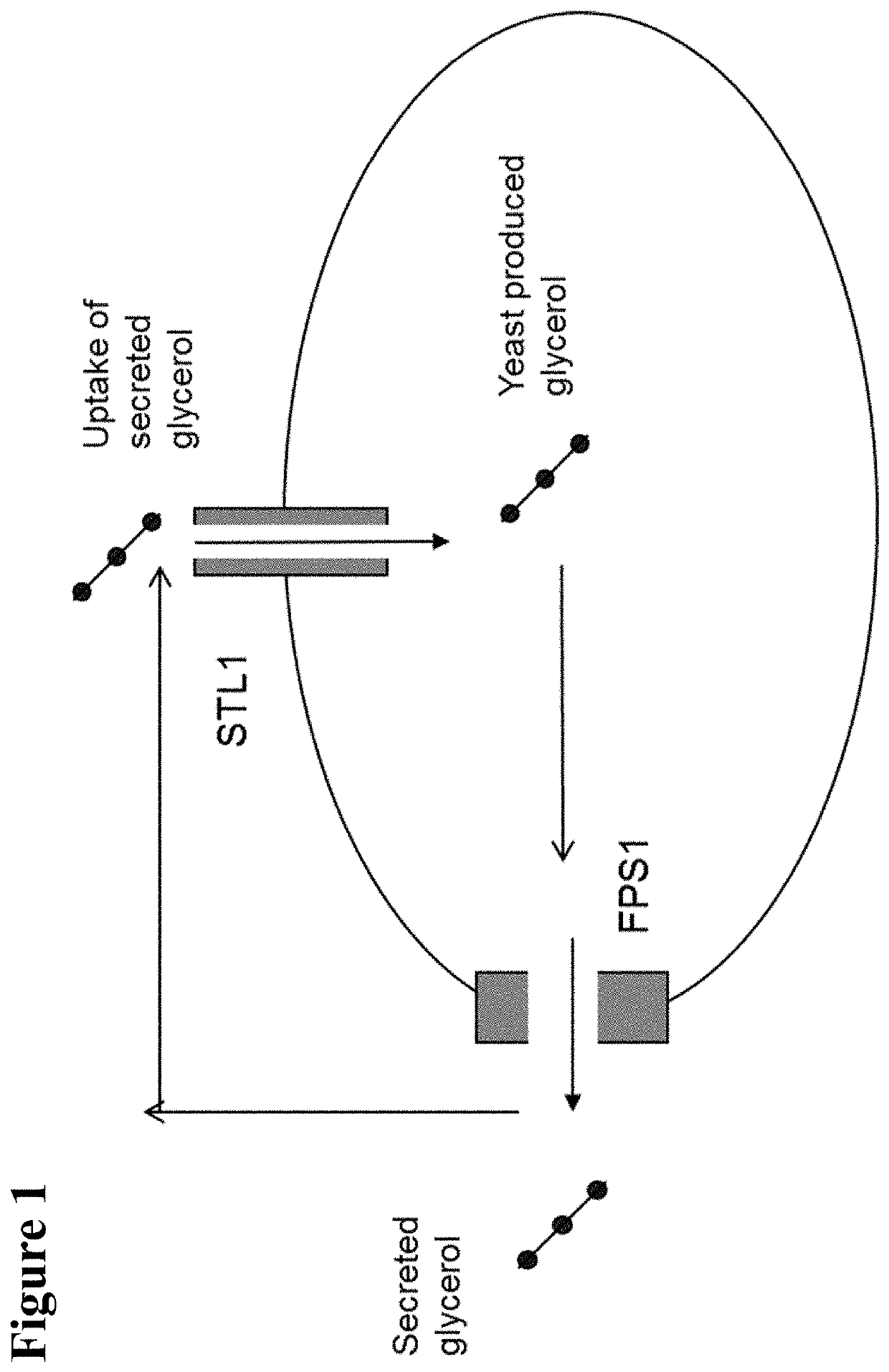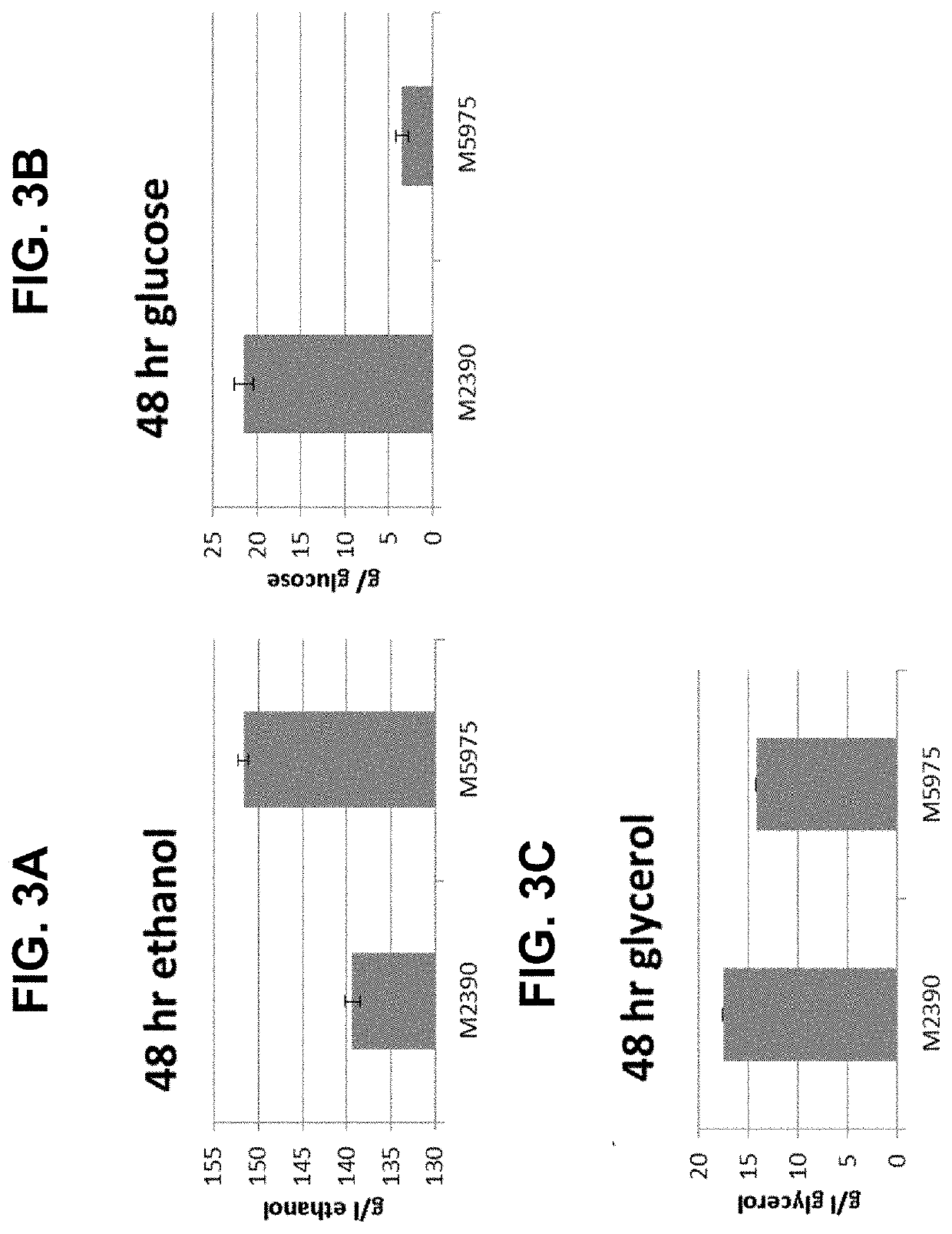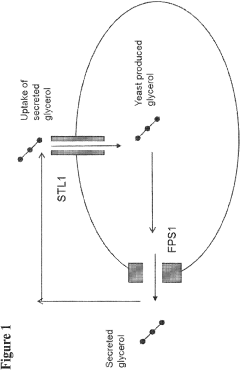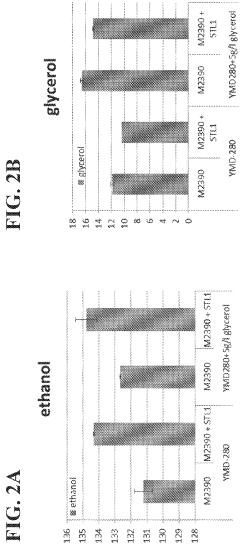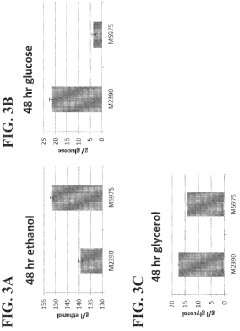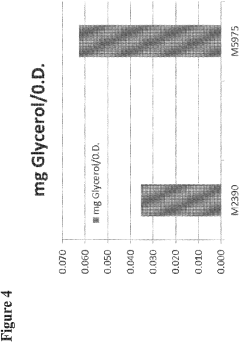Industrial Applications of Pentose Phosphate Pathway Dynamics
Research Background and Objectives
The Pentose Phosphate Pathway (PPP) has been a subject of intense scientific scrutiny since its discovery in the 1950s. This metabolic pathway, parallel to glycolysis, plays a crucial role in cellular metabolism, particularly in the production of NADPH and ribose-5-phosphate. As industrial biotechnology has advanced, the potential applications of PPP dynamics have garnered significant attention across various sectors.
The evolution of PPP research has been marked by several key milestones. Initial studies focused on elucidating the pathway's biochemistry and its role in glucose metabolism. As understanding deepened, researchers began to explore how PPP could be manipulated for industrial purposes. The advent of genetic engineering and metabolic engineering in the 1970s and 1980s opened new avenues for harnessing PPP dynamics in microbial cell factories.
In recent years, the industrial applications of PPP have expanded dramatically. The pathway's ability to generate reducing power in the form of NADPH has made it a target for optimizing the production of various high-value compounds, including biofuels, pharmaceuticals, and fine chemicals. Additionally, the ribose-5-phosphate produced by PPP is essential for nucleotide synthesis, making it valuable in the production of nucleic acid-based products.
The primary objective of current PPP research in industrial settings is to enhance the efficiency and productivity of bioprocesses. This involves manipulating the flux through the pathway to favor the production of desired metabolites while maintaining cellular health. Researchers aim to develop robust microbial strains with optimized PPP activity, capable of converting renewable feedstocks into valuable products at economically viable rates.
Another key goal is to integrate PPP optimization with other metabolic engineering strategies to create versatile and efficient biocatalysts. This holistic approach seeks to balance the interplay between PPP, glycolysis, and other central metabolic pathways to achieve optimal cellular performance under industrial conditions.
Furthermore, there is a growing interest in exploring the potential of PPP dynamics in non-traditional hosts, such as photosynthetic organisms, to develop novel bioprocesses that can directly utilize CO2 as a carbon source. This aligns with the broader trend towards sustainable and carbon-neutral industrial practices.
As we look to the future, the industrial applications of PPP dynamics are expected to play an increasingly important role in the bio-based economy. The ongoing efforts to unravel the complexities of metabolic regulation and to develop more sophisticated genetic tools promise to unlock new possibilities for harnessing this fundamental pathway in industrial biotechnology.
Market Demand Analysis for Pentose Phosphate Pathway-Based Products
The market demand for products based on the Pentose Phosphate Pathway (PPP) dynamics has shown significant growth potential across various industrial sectors. This metabolic pathway, crucial for generating NADPH and ribose 5-phosphate, has garnered increasing attention from biotechnology, pharmaceutical, and food industries.
In the biotechnology sector, the demand for PPP-based products is primarily driven by the need for sustainable production of biofuels and biochemicals. The pathway's ability to generate reducing power in the form of NADPH makes it an attractive target for metabolic engineering to enhance the production of various high-value compounds. This has led to a growing market for engineered microorganisms capable of efficiently utilizing the PPP for industrial-scale production of biofuels, organic acids, and other bio-based chemicals.
The pharmaceutical industry has also shown keen interest in PPP-based products, particularly in the development of novel therapeutics and drug delivery systems. The pathway's role in nucleotide synthesis and cellular redox balance has made it a target for cancer research and drug development. Market demand in this sector is focused on PPP inhibitors as potential anticancer agents and on leveraging the pathway for improved production of pharmaceutical precursors.
In the food and beverage industry, PPP-based products are gaining traction due to their potential applications in natural sweeteners, flavor enhancers, and nutritional supplements. The pathway's involvement in the synthesis of aromatic amino acids and vitamins has opened up new opportunities for developing functional foods and nutraceuticals. Market demand in this sector is driven by consumer preferences for natural and health-promoting ingredients.
The agricultural sector has also shown interest in PPP-based products, particularly in the development of stress-resistant crops and improved plant growth promoters. The pathway's role in plant metabolism and stress response has led to research into enhancing crop yields and resilience through genetic modification of PPP-related genes.
While specific market size figures for PPP-based products are not readily available due to the diverse and emerging nature of applications, industry reports indicate a growing trend in research and development investments related to PPP technologies. The global biotechnology market, which encompasses many PPP-based applications, is projected to experience substantial growth in the coming years, driven by advancements in metabolic engineering and synthetic biology.
As environmental concerns and sustainability initiatives gain prominence, the demand for bio-based products derived from renewable resources is expected to further boost the market for PPP-based technologies. This trend is likely to create new opportunities for innovation and commercialization across multiple industries, positioning PPP dynamics as a key area of focus for industrial biotechnology in the near future.
Current State and Challenges in Pentose Phosphate Pathway Utilization
The industrial utilization of the Pentose Phosphate Pathway (PPP) has gained significant attention in recent years due to its potential in various biotechnological applications. Currently, the PPP is being explored for its role in the production of valuable compounds, biofuels, and pharmaceuticals. However, the widespread implementation of PPP-based processes faces several challenges that need to be addressed.
One of the primary areas of focus in PPP utilization is the production of biofuels and biochemicals. Researchers have successfully engineered microorganisms to enhance PPP flux, leading to increased yields of products such as ethanol, isobutanol, and aromatic compounds. Despite these advancements, the efficiency of these processes remains suboptimal, with issues related to metabolic bottlenecks and redox imbalances limiting overall productivity.
In the pharmaceutical industry, the PPP has shown promise in the synthesis of complex molecules and drug precursors. The pathway's ability to generate NADPH and ribose-5-phosphate makes it valuable for producing nucleotides and certain amino acids. However, the integration of PPP-based processes into existing pharmaceutical manufacturing pipelines presents challenges in terms of scalability and regulatory compliance.
The food and beverage industry has also begun exploring PPP applications, particularly in the production of natural sweeteners and flavor compounds. While initial results are promising, issues related to product purity and consistency need to be addressed before large-scale implementation can be realized.
A significant challenge in PPP utilization across industries is the need for better control over pathway dynamics. The complex regulation of PPP enzymes and their interactions with other metabolic pathways make it difficult to predict and optimize flux distribution. This has led to increased research efforts in metabolic engineering and synthetic biology to develop more robust and controllable PPP-based systems.
Another hurdle in the industrial application of PPP dynamics is the limited availability of suitable host organisms. While model organisms like E. coli and S. cerevisiae have been extensively studied, there is a need to expand the range of industrial microorganisms capable of efficiently utilizing the PPP for diverse applications.
The development of advanced analytical tools and techniques for monitoring PPP flux in real-time remains a critical challenge. Current methods often rely on end-point measurements or require complex sample preparation, limiting the ability to implement dynamic process control strategies.
Lastly, the economic viability of PPP-based processes is a significant concern. Many potential applications, while scientifically feasible, struggle to compete with established chemical synthesis routes in terms of cost-effectiveness. Overcoming this challenge will require continued efforts in process optimization, strain engineering, and the development of novel biorefinery concepts that can fully leverage the versatility of the PPP.
Existing Industrial PPP Exploitation Strategies
01 Genetic engineering of the pentose phosphate pathway
Modification of genes involved in the pentose phosphate pathway to enhance production of desired compounds or improve metabolic efficiency. This can include overexpression of key enzymes or introduction of heterologous genes to redirect carbon flux through the pathway.- Genetic engineering of the pentose phosphate pathway: Genetic modifications are made to enhance or alter the pentose phosphate pathway in microorganisms. This can involve introducing new genes, modifying existing ones, or altering regulatory elements to improve flux through the pathway. Such modifications can lead to increased production of desired metabolites or improved utilization of pentose sugars.
- Metabolic engineering for improved pentose utilization: Strategies are developed to enhance the ability of microorganisms to utilize pentose sugars, particularly in the context of biofuel production. This can involve optimizing enzymes in the pentose phosphate pathway, introducing heterologous pathways, or modifying sugar transport systems to improve pentose uptake and metabolism.
- Regulation and control of the pentose phosphate pathway: Research focuses on understanding and manipulating the regulatory mechanisms of the pentose phosphate pathway. This includes studying transcriptional and post-translational regulation, metabolic flux analysis, and developing methods to control pathway activity for desired outcomes in biotechnology applications.
- Applications in metabolite production: The pentose phosphate pathway is exploited for the production of various valuable metabolites. This can include the synthesis of aromatic compounds, nucleotides, amino acids, or other industrially relevant molecules. Efforts are made to redirect carbon flux through the pathway to maximize the yield of target products.
- Integration with other metabolic pathways: Research explores the integration of the pentose phosphate pathway with other metabolic pathways to create novel or improved biosynthetic routes. This can involve combining elements of glycolysis, the TCA cycle, or other pathways to optimize carbon utilization and product formation in engineered organisms.
02 Utilization of pentose sugars in fermentation processes
Development of methods to efficiently utilize pentose sugars, such as xylose and arabinose, in fermentation processes. This includes engineering microorganisms to metabolize these sugars through the pentose phosphate pathway for the production of biofuels or other valuable compounds.Expand Specific Solutions03 Regulation and control of the pentose phosphate pathway
Investigation of regulatory mechanisms and control points in the pentose phosphate pathway. This includes studying the effects of environmental factors, metabolic intermediates, and genetic regulators on pathway flux and enzyme activities.Expand Specific Solutions04 Application of the pentose phosphate pathway in metabolic engineering
Exploitation of the pentose phosphate pathway for metabolic engineering purposes, such as improving production of NADPH, ribose-5-phosphate, or other pathway intermediates. This can involve redirecting metabolic flux or integrating the pathway with other metabolic routes for enhanced biosynthesis of target compounds.Expand Specific Solutions05 Analysis and modeling of pentose phosphate pathway dynamics
Development of analytical methods and computational models to study the dynamics and flux distribution of the pentose phosphate pathway. This includes the use of metabolomics, fluxomics, and systems biology approaches to understand pathway behavior and optimize its performance in various applications.Expand Specific Solutions
Key Players in PPP-Related Industries
The industrial applications of pentose phosphate pathway dynamics are in an early development stage, with a growing market potential due to its relevance in biotechnology and metabolic engineering. The technology's maturity is still evolving, as evidenced by the diverse range of companies involved, from established players like Archer-Daniels-Midland Co. and Evonik Operations GmbH to research institutions such as Wuhan University and the University of California. The competitive landscape is characterized by a mix of large corporations, specialized biotech firms like Genomatica, Inc., and academic institutions, indicating a collaborative yet competitive environment for innovation in this field.
Genomatica, Inc.
Archer-Daniels-Midland Co.
Core Innovations in PPP Pathway Engineering
- Engineering recombinant microorganisms to uptake extracellular glycerol, overexpress glycerol import proteins like STL1, and downregulate or delete glycerol production genes, while introducing alternative metabolic pathways to convert carbohydrates to alcohols, such as ethanol or isopropanol, thereby reducing intracellular glycerol production.
- Engineering recombinant microorganisms to uptake extracellular glycerol, modulate its production, and utilize alternative electron acceptors to reduce glycerol levels, thereby increasing ethanol yield by redirecting carbon flow to desired end-products.
Regulatory Framework for PPP-Derived Products
The regulatory framework for products derived from the Pentose Phosphate Pathway (PPP) is a complex and evolving landscape that spans multiple jurisdictions and regulatory bodies. At the international level, organizations such as the World Health Organization (WHO) and the Food and Agriculture Organization (FAO) provide guidelines and standards that influence national regulations. These guidelines often focus on safety assessments, quality control, and labeling requirements for PPP-derived products, particularly those intended for human consumption or medical applications.
In the United States, the Food and Drug Administration (FDA) plays a crucial role in regulating PPP-derived products. The FDA's oversight extends to food additives, dietary supplements, pharmaceuticals, and medical devices that may incorporate PPP-related technologies. The agency's regulatory approach typically involves premarket approval processes, Good Manufacturing Practice (GMP) compliance, and post-market surveillance. For instance, novel sweeteners or nutritional supplements developed through PPP manipulation would fall under the FDA's purview and require extensive safety and efficacy data before market approval.
The European Union (EU) has established a comprehensive regulatory framework through the European Food Safety Authority (EFSA) and the European Medicines Agency (EMA). These bodies enforce stringent regulations on novel foods, food additives, and biotechnology-derived products. The EU's Novel Food Regulation (Regulation (EU) 2015/2283) is particularly relevant for PPP-derived products, as it requires a thorough safety assessment and authorization process before market entry.
In Asia, countries like Japan and China have their own regulatory bodies and frameworks. Japan's Ministry of Health, Labour and Welfare (MHLW) and the Food Safety Commission (FSC) oversee the approval of new food ingredients and additives, including those derived from PPP technologies. China's National Medical Products Administration (NMPA) regulates pharmaceuticals and medical devices, while the State Administration for Market Regulation (SAMR) oversees food safety and related products.
Environmental regulations also play a significant role in the PPP-derived product landscape. Many countries have implemented biosafety regulations that govern the development and use of genetically modified organisms (GMOs), which may be relevant to PPP-related biotechnologies. These regulations often require environmental impact assessments and risk management strategies.
As the field of PPP-derived products continues to advance, regulatory frameworks are likely to evolve. Emerging areas such as synthetic biology and metabolic engineering may necessitate new regulatory approaches. Harmonization efforts between different regulatory bodies are ongoing to facilitate international trade and ensure consistent safety standards across borders. Companies operating in this space must navigate these complex regulatory environments, often requiring significant resources for compliance and regulatory affairs management.
Environmental Impact of PPP-Based Processes
The industrial applications of the Pentose Phosphate Pathway (PPP) dynamics have significant environmental implications that warrant careful consideration. As industries increasingly adopt PPP-based processes, the environmental impact becomes a crucial factor in assessing their sustainability and long-term viability.
One of the primary environmental benefits of PPP-based processes is their potential to reduce greenhouse gas emissions. By utilizing renewable biomass feedstocks, these processes can help decrease reliance on fossil fuels, thereby contributing to climate change mitigation efforts. The carbon-neutral nature of biomass-derived products can lead to a substantial reduction in the carbon footprint of various industrial sectors, including chemicals, pharmaceuticals, and biofuels.
However, the environmental impact of PPP-based processes extends beyond carbon emissions. The cultivation and harvesting of biomass feedstocks for industrial use can have both positive and negative effects on land use and biodiversity. On one hand, it can promote the development of sustainable agriculture practices and provide economic incentives for maintaining diverse ecosystems. On the other hand, if not managed properly, it may lead to deforestation, soil degradation, and loss of natural habitats.
Water usage is another critical environmental aspect of PPP-based processes. While these processes often require less water compared to traditional petrochemical routes, the scale of industrial applications can still place significant demands on local water resources. Implementing water-efficient technologies and closed-loop systems becomes essential to minimize the environmental impact and ensure sustainable water management.
The waste streams generated by PPP-based processes also merit attention from an environmental perspective. These processes can produce organic by-products that, if not properly treated, may lead to water pollution and ecosystem disruption. However, many of these by-products have the potential to be valorized into useful co-products, promoting a circular economy approach and reducing overall waste generation.
Energy consumption in PPP-based processes is generally lower than in conventional petrochemical routes, contributing to improved energy efficiency in industrial operations. This reduction in energy demand can translate to lower overall environmental impact, particularly when coupled with the use of renewable energy sources in process operations.
Lastly, the environmental impact of PPP-based processes must be evaluated in the context of their entire life cycle. This includes considering the environmental costs of biomass production, transportation, processing, and end-of-life disposal or recycling of the final products. Life Cycle Assessment (LCA) studies are crucial in providing a comprehensive understanding of the environmental footprint of these processes and identifying areas for improvement.
